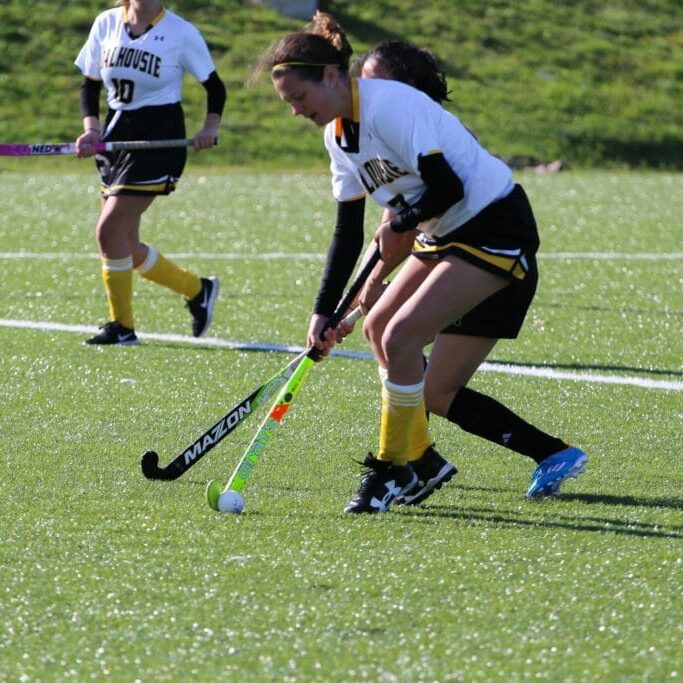
From a championship high to a paralyzing low
Deanna Kimber's story of winning a field hockey championship to days later, nearly in a medically induced coma
Deanna Kimber likes to live an active lifestyle. She volunteers as a field hockey coach with her sister Jessica and she plays for the field hockey team at Dalhousie University.
Within just a span of a few weeks in the fall of 2017, Deanna went from winning the university field hockey championships to being nearly paralyzed.
On the last weekend of fall reading week, Deanna started feeling numbness in her feet. She didn’t think much of it because she has bad circulation, so the feeling wasn’t unusual.
The next day the numbness got worse; she went down the stairs of her home to let her dog out, but she had to crawl back up and tell her mother something was wrong. They waited to see if it would pass.
It didn’t.
So they drove to the Halifax Infirmary’s emergency room.
“By the time we left the house it was actually hard to get her to the car and then from the car into triage at the hospital; I should have had a wheelchair, it was very quick,” said her mother Cheryl Kimber about the numbness spreading.
Doctors met her quickly and started doing different tests – her reflexes gave no response.
“That was a little bit scary, feeling the disconnect to the rest of my body,” says Deanna.
Deanna was diagnosed with Guillain-Barré Syndrome. This occurs when the immune system attacks the nervous system, which can lead to weakness and paralysis of the entire body. Most people recover from it.
Deanna’s condition regressed quickly. Three days in, the muscles in her body like her diaphragm were impacted. Her breathing capacity got so low that doctors considered putting her on a ventilator, which would require her to be in a medically induced coma.
Luckily, her capacity went up.
Kimber spent a week in the intermediate care unit, five days in the neurology section. Then, she was sent to the rehabilitation centre where she stayed for just over two months.
Studying medical science at Dal, Kimber had to drop most of her fall courses that semester – even though she was almost done – and she took the winter semester off, too.
With more time on her hands than she was used to, Kimber wanted something to do. She admits she’s not the best at relaxing, so she started knitting.
It was tough, but she kept at it and it helped her finger dexterity make a quick come back. She couldn’t go Christmas shopping so she knitted hats and mittens as presents.
For her field hockey team’s secret Santa gift exchange, she had teammate Ellery Platts.
“When the secret Santa came around her sister came and was like ‘Ellery, Dee had you as her secret Santa’ and I was like it’s fine if she didn’t get me anything and they were like ‘no she knitted you a hat as a part of her rehab’ and I just balled,” says Platts. “I can’t believe Dee; even though she was sick, she still had time to do that. She cares so much about other people. That she still managed to do this was amazing.”
On Feb. 6th, Deanna, her sister Jessica and her rehabilitation team went to the oval to skate. Deanna used to play hockey so she is comfortable on skates but she was still given a walker.
While she was skating, Deanna pivoted and started skating backwards, lifting the walker.
She didn’t need it.
Her sister said, “Everyone was shocked.” They could hardly believe they were watching Deanna skate on her own.
Kimber skated 11 laps that day.
“I just kept skating because it felt so free being able to move; even in the fresh air, because I hadn’t been outside that much,” she says. “So it felt cool having the cold air on my face and just skating.”
Deanna had been scheduled to get discharged from the rehabilitation centre two weeks after the skating trip. But she wasn’t sore the day after skating, so they discharged her that same week. But she continued to go back for another month as an out-patient.
As a medical science student, Kimber says it was interesting to be able to see first-hand how the medical profession works.
“They always say in class these [diseases] are pretty rare – this is what happens though. You go ‘oh I will probably never see that’ and you just think about memorizing these just for the class.”
It was a first-hand lesson in how important it is for students to really get to know the symptoms they study. “Not only just for a test but to actually diagnose somebody,” she says.
By March, Kimber was feeling almost back to normal.
She was walking again, driving and hoping to start working. Her energy wasn’t completely back to normal, but she was looking forward to it coming back and getting back on the field.
“I’m still able to do so much more and I still like pushing myself to do everything normally again,” she’d said in March.
Today, she has a job and is training in order to get ready for the field hockey season in the fall.






